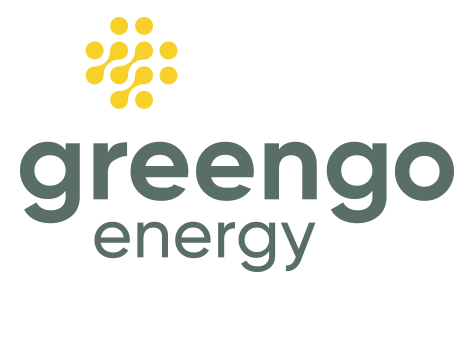
TECHNOLOGIES
The four core technologies powering the green shift
All projects at GreenGo Energy are based on the four instrumental technologies driving the energy transition: solar, wind, storage, and PtX, each complementary and needed for a net-zero world. These technologies have improved massively over time, and each technology platform continues a disruptive path of efficiency improvements and cost reduction, driven by the key technology providers in the global industry. This continuous development is a key driver and enabler of the shift to a future world based fully on renewable energy.
Our dedicated technology and global supply chain team monitors all relevant technological developments, track supplier roadmaps and conduct regular visits to all key suppliers to build and maintain strong relationships with these. This ensures that all projects are executed with state-of-the-art technologies providing optimal performance, efficiency and cost, benefiting our investment partners.
Utility-scale solar
Our solar PV projects are designed for resilience and performance. From initial land origination to full grid integration, we deliver solar farms that maximize energy output and long-term value.
Leveraging the latest developments in solar cell and module technology, and a carefully optimized plant design from our design and engineering team, we ensure that each project is tailored to its environment. Our projects are designed to maximize returns and deliver the highest possible quality for the benefit of our investment partners.
Solar PV continues its disruptive path with ever increasing cell and module efficiencies ensuring continued cost disruption and reduced plant footprint. Today, utility-scale solar is the most competitive technology in power generation, and deployment can happen in most of the world without any subsidies.
Battery energy storage (BESS)
BESS solutions are the natural future backbone of a flexible and resilient energy system and unlock the full value of renewables. By storing excess renewable energy at production peaks and releasing it when demand peaks intraday, we optimize value capture, stabilize markets and reduce the stress on the grid from the inherently intermittent solar and wind generation sources. BESS is the “next big thing”, a paradigm shift to a world where renewable projects now have controllable dispatch and are no longer just intermittent. BESS is a future normal for all our solar, wind or solar/wind hybrid projects. In addition, we develop BESS as stand-alone projects where this makes sense, generally in strategic locations close to larger substations.
BESS has seen massive technological improvements and cost disruption over just the last three years, and this development is expected to continue. As such, we see BESS as the most important technology of the four over the next decade, especially since it will enable the existing transmission grid to manage a much higher degree of renewable deployment.
Another trend deriving from the BESS revolution is fully automated AI driven energy trading and grid management platforms. This we monitor closely; itself a potential paradigm shift in renewable deployment.
Onshore wind
Our wind projects are designed to harness wind resources with highest precision. Through advanced siting and aerodynamic optimization, we deliver consistent energy yields and target long-term operational excellence. Our projects leverage the latest in advanced turbine technology and a data-driven siting and yield modelling.
Our onshore wind projects are now most often integrated in hybrid form with our utility-scale solar projects to fully leverage the benefits of shared infrastructure, lowering overall cost of energy. BESS is now also consistently integrated as the third core component to ensure a compelling 24h and year-round generation profile that is much closer to baseload than standalone wind. This drastically optimizes value capture and smoothens grid integration.
Onshore wind projects generally have more constraints than solar PV given by the sheer height of modern turbine technologies. Onshore wind is best deployed in rural areas with respectful distances to neighbors.
Onshore wind has seen constant technology and cost improvements over the last decades, although the disruption potential is less than that of utility-scale solar. Still, onshore wind represents one of the lowest costs of energy technologies in many geographies, in particular in areas with strong wind resources.
Lower carbon fuels and Power-to-X (PtX)
We are one of the pioneers in the development of a future based on low carbon and fully green fuels through Power-to-X technologies with integrated renewable power generation. By converting renewable electricity into hydrogen, ammonia and other e-fuels, we enable deep decarbonization across hard-to-abate sectors.
Our PtX projects are developed at scale — integrating electrolysis, synthesis, and downstream logistics to deliver clean fuels for industry, shipping, transport, and beyond.
Our clear mission is to reach cost parity with grey and black fuels over the next decade. This requires project locations with significant scale, best-in-world resources, and workable infrastructure. One of the reasons why we now have a project pipeline in West Africa with projects of massive scale.
Rendering of Megaton Moon project in Mauritania, incorporating onshore wind, solar, BESS, PtX and much more.

